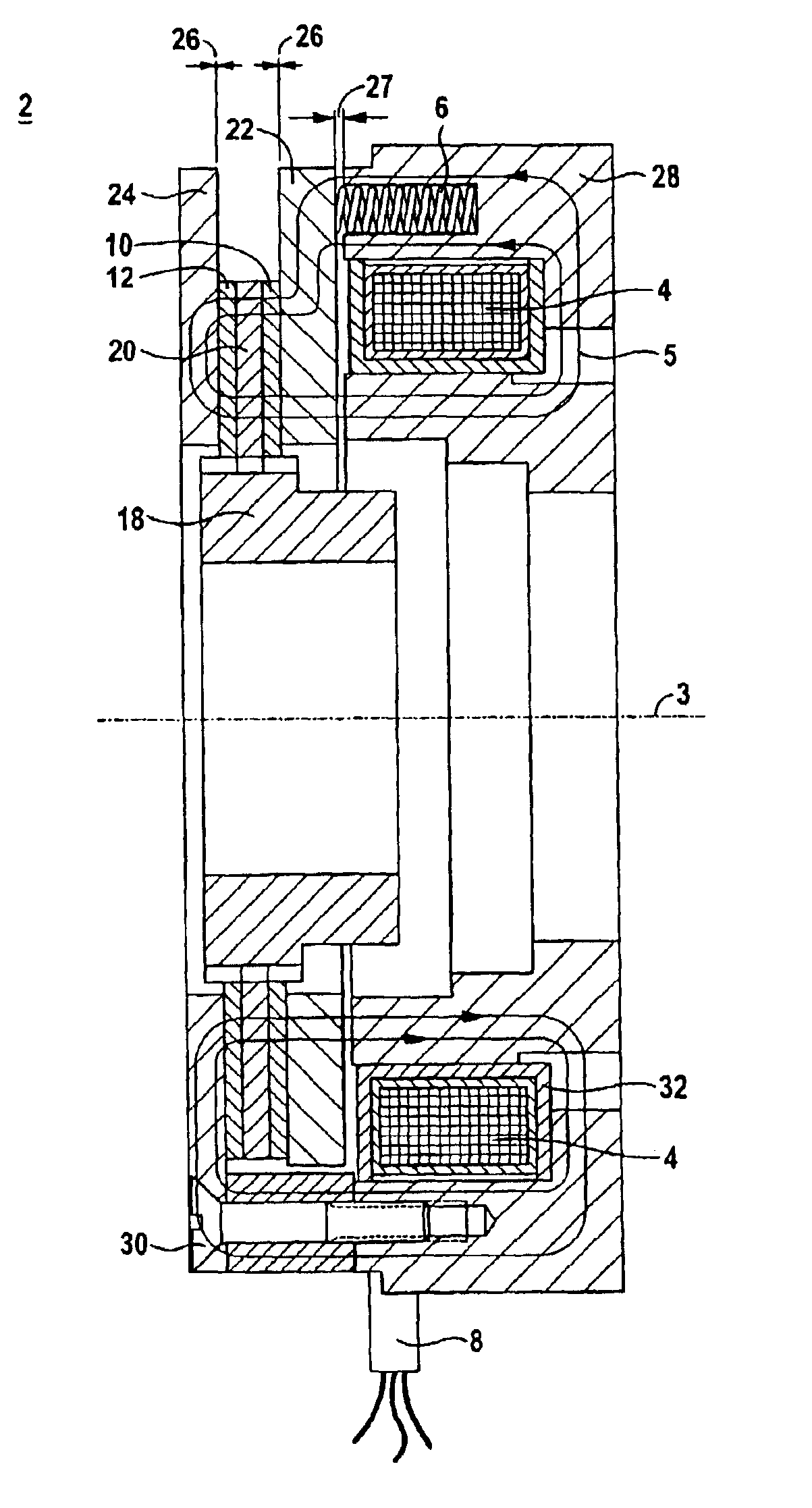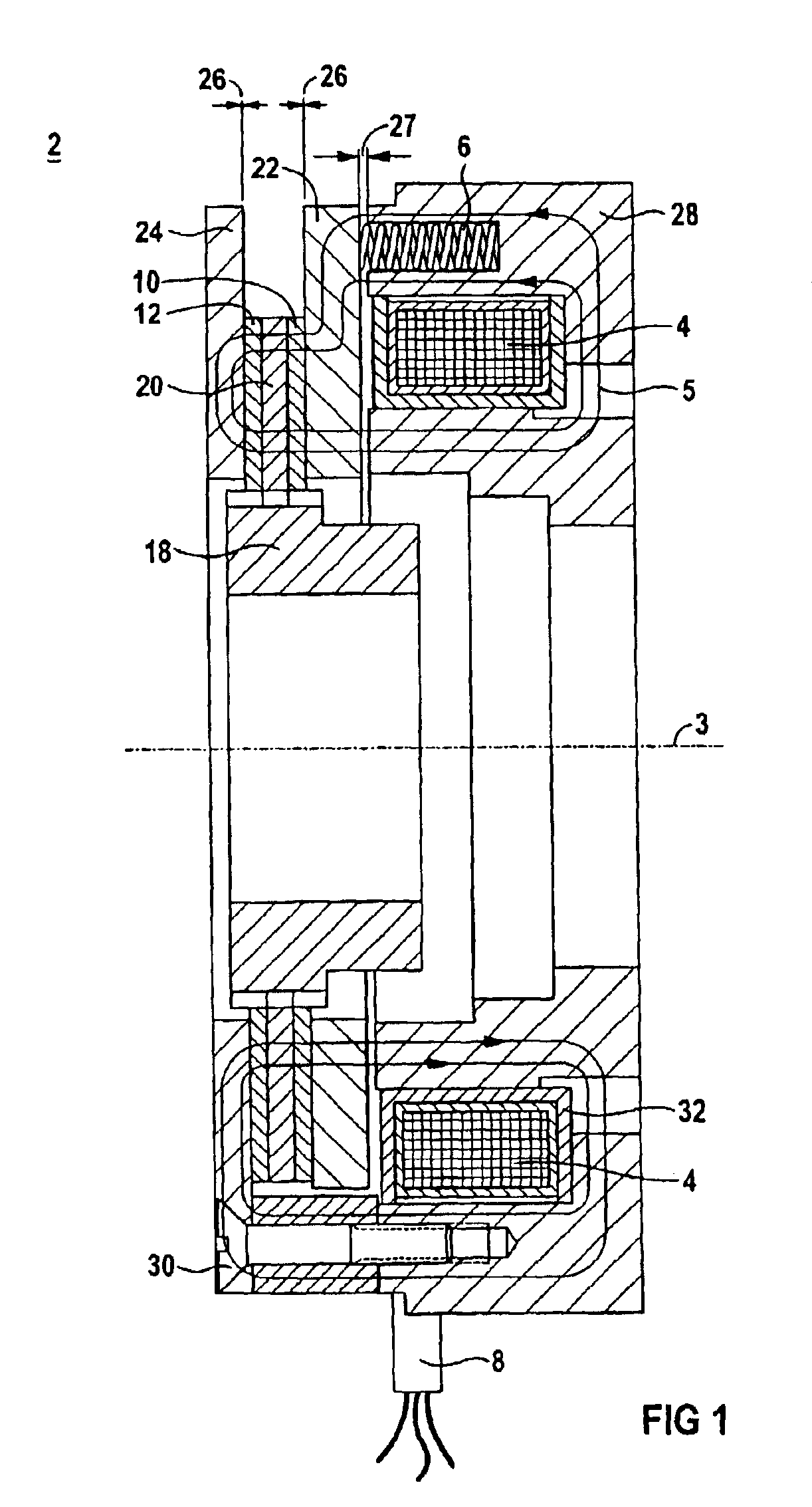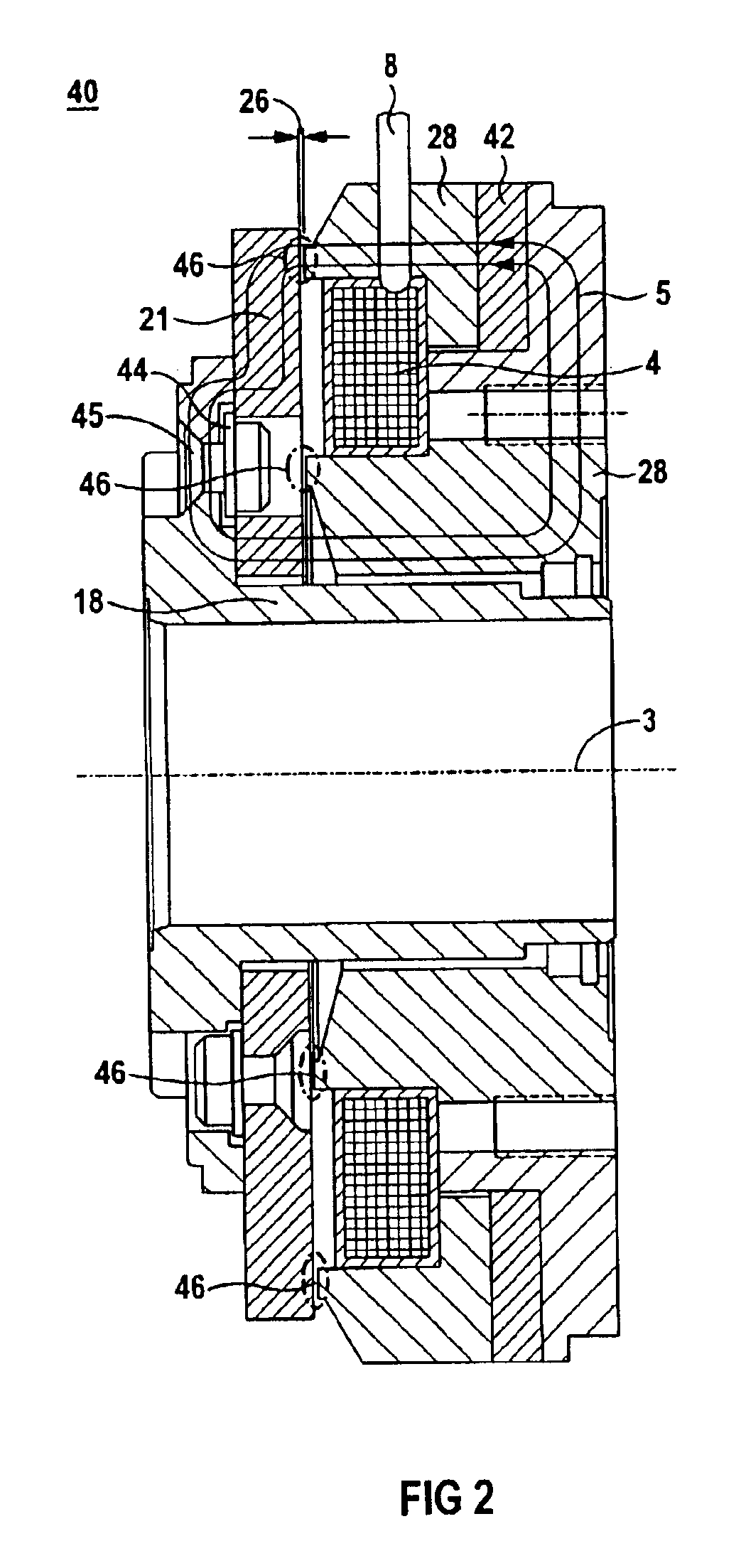Method for detecting wear in a brake or a clutch
a technology of brakes and clutches, applied in the direction of instruments, structural/machine measurement, force/torque/work measurement, etc., can solve the problems of air gap becoming larger, wear generally occurring, and the inductance of electrical excitable coils decreasing, so as to reduce the cost of wear detection, and improve the inductance of coils.
- Summary
- Abstract
- Description
- Claims
- Application Information
AI Technical Summary
Benefits of technology
Problems solved by technology
Method used
Image
Examples
Embodiment Construction
[0037]FIG. 1 shows a spring pressure brake 2. It has a fixed element such as an armature 22 and at least one element which can move in rotation about an axis 3, here a driver 18 and a friction disk 20. The armature 22 is connected via a spring 6 to a magnet housing 28. Within the magnet housing there is an electrically excitable coil 4 in a coil housing 32. The coil 4 can be excited by means of a coil terminal 8 so that a magnetic field is formed in the excited state. A magnet flux 5 is represented by lines. Between the armature 22 and the magnet housing 28 is an airgap 27. This airgap 27 occurs when the spring 6 presses the armature 22 against the friction disk 20, the friction disk 20 having a brake lining 10 and 12. The brake lining 10 is then located in a frictionally locking connection with the armature 22, whereas the brake lining 12 is in a frictionally locking connection with the friction plate 24, which is also fixed like the armature 22. If the brake is opened, an airgap 2...
PUM
 Login to View More
Login to View More Abstract
Description
Claims
Application Information
 Login to View More
Login to View More - R&D
- Intellectual Property
- Life Sciences
- Materials
- Tech Scout
- Unparalleled Data Quality
- Higher Quality Content
- 60% Fewer Hallucinations
Browse by: Latest US Patents, China's latest patents, Technical Efficacy Thesaurus, Application Domain, Technology Topic, Popular Technical Reports.
© 2025 PatSnap. All rights reserved.Legal|Privacy policy|Modern Slavery Act Transparency Statement|Sitemap|About US| Contact US: help@patsnap.com



